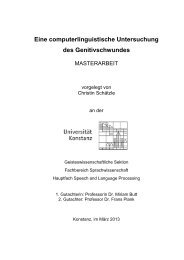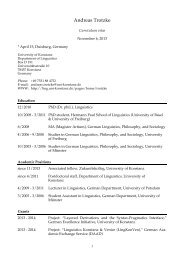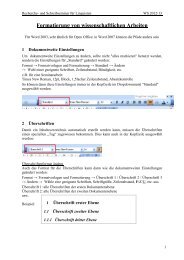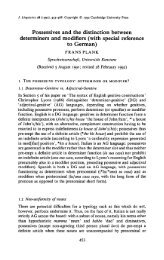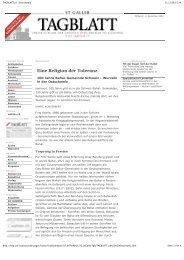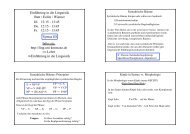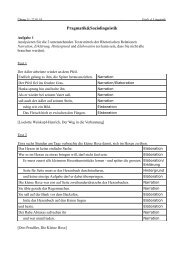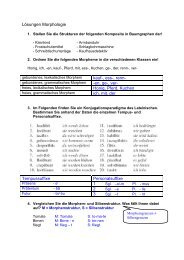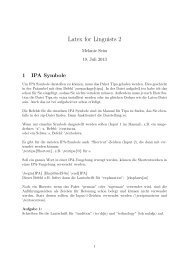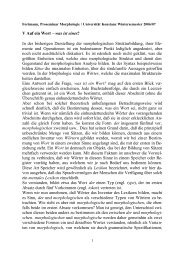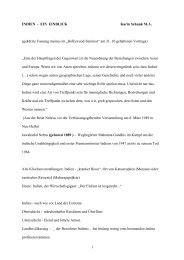5. Morphology in Relation to Phonology
5. Morphology in Relation to Phonology
5. Morphology in Relation to Phonology
Create successful ePaper yourself
Turn your PDF publications into a flip-book with our unique Google optimized e-Paper software.
F. Plank, <strong>Morphology</strong> I: <strong>5.</strong> <strong>Morphology</strong> <strong>in</strong> <strong>Relation</strong> <strong>to</strong> <strong>Phonology</strong> 5<br />
When a noun like nation is turned <strong>in</strong><strong>to</strong> an adjective by means of the<br />
suffix -al, the stem vowel needs <strong>to</strong> be phonologically adjusted <strong>to</strong> this<br />
environment: it is pronounced lax (or short);<br />
the suffix itself, be<strong>in</strong>g one of those suffixes that are unstressed, has the<br />
reduced vowel [E].<br />
When this adjective is then turned <strong>in</strong><strong>to</strong> a noun through suffix -ity, the<br />
stem vowel rema<strong>in</strong>s lax/short, but -ity is one of those suffixes that affect<br />
word stress: -ity words are pronounced with the ma<strong>in</strong> stress on the<br />
antepenultimate syllable, i.e., the syllable right before the suffix – which<br />
is pronounced with a full vowel, as all stressed syllables.<br />
When this multiply derived noun is now itself pluralised, what the<br />
phonology has achieved at the previous steps rema<strong>in</strong>s unaltered: stem<br />
vowel lax/short (as effectuated at the step of -al suffixation); stress<br />
retraction and full vowel (as effectuated at the step of -ity suffixation).



